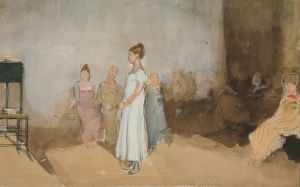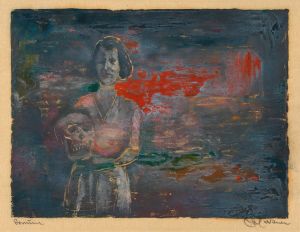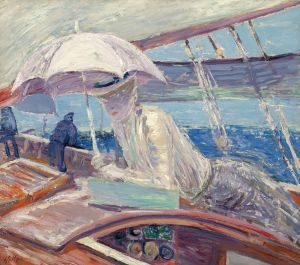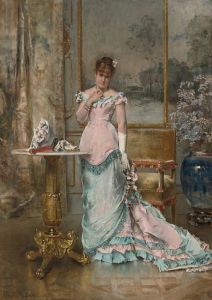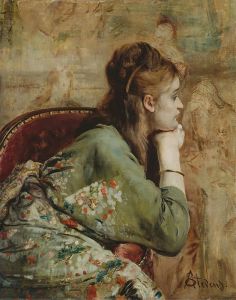
Rêverie
A hand-painted replica of Alfred Stevens’s masterpiece Rêverie, meticulously crafted by professional artists to capture the true essence of the original. Each piece is created with museum-quality canvas and rare mineral pigments, carefully painted by experienced artists with delicate brushstrokes and rich, layered colors to perfectly recreate the texture of the original artwork. Unlike machine-printed reproductions, this hand-painted version brings the painting to life, infused with the artist’s emotions and skill in every stroke. Whether for personal collection or home decoration, it instantly elevates the artistic atmosphere of any space.
Alfred Stevens was a Belgian painter known for his exquisite portrayal of women in elegant settings, often capturing the subtleties of emotion and the intricacies of fashion. One of his notable works is "Rêverie," a painting that exemplifies his skill in combining realism with a sense of introspective mood.
"Rêverie," which translates to "Daydream" in English, is a painting that showcases Stevens' mastery in depicting the nuanced expressions and delicate features of his subjects. The painting typically features a woman in a moment of quiet contemplation, often set against a richly detailed interior that reflects the opulence of the 19th-century bourgeoisie. Stevens was known for his ability to capture the textures of fabrics and the play of light on different surfaces, and "Rêverie" is no exception. The attention to detail in the woman's attire and the surrounding decor highlights Stevens' dedication to realism and his keen observation skills.
The subject of "Rêverie" is often seen as a representation of the introspective and sometimes melancholic nature of daydreaming. Stevens had a unique ability to convey the inner thoughts and emotions of his subjects through subtle facial expressions and body language. The woman in "Rêverie" is typically portrayed in a relaxed pose, her gaze directed away from the viewer, suggesting a moment of personal reflection or escape into her thoughts. This introspective quality is a hallmark of Stevens' work, as he often sought to capture the psychological depth of his subjects.
Stevens' choice of setting and composition in "Rêverie" reflects the influence of both the Realist and Impressionist movements, which were prominent during his lifetime. While his work is grounded in realism, with meticulous attention to detail, there is also an impressionistic quality in the way he captures the fleeting nature of a moment. The interplay of light and shadow, as well as the soft, almost ethereal quality of the scene, adds to the dreamlike atmosphere of the painting.
Alfred Stevens was part of a broader movement of artists in the 19th century who were interested in exploring themes of modern life and the role of women in society. His paintings often depict women in domestic settings, highlighting both their elegance and their introspective nature. "Rêverie" fits within this context, offering a glimpse into the private world of a woman lost in thought, a theme that resonated with the societal changes and the evolving roles of women during that era.
Stevens' work, including "Rêverie," was well-received during his lifetime, and he enjoyed considerable success and recognition. His ability to capture the essence of his subjects with sensitivity and precision made him a sought-after portraitist among the elite of his time. Today, his paintings are appreciated for their technical skill and their ability to convey the complexities of human emotion.
In summary, "Rêverie" by Alfred Stevens is a quintessential example of the artist's talent for portraying the delicate balance between realism and introspection. Through his meticulous attention to detail and his ability to capture the subtle nuances of emotion, Stevens invites viewers to pause and reflect on the quiet moments of contemplation that define the human experience.






